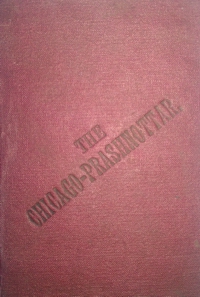31. Question:
It is declared in the Upanishads as well as stated by Anandagiri, the disciple of Shankara Swami in the third chapter of the “Shankara - dig-vijaya" that the Supreme spirit is the material cause of the universe. The material cause is that which transforms itself into effect. This shows that whatever there is in the universe is the transformation of the Supreme spirit. The universe thus being the form of the Supreme spirit, what objection is there that God is the creator of the universe?
Answer:
You are certainly the prince of atheists. Do you at all consider what you say? Your statement shows your position to be atheistic. When the world is the transformation of the Supreme Being, then there are no such things as a sinner, a virtuous man, a sage, a fool, the heaven or the hell, a good man, or a thief, truthful or untruthful scriptures &c. &c. From this point of view there is no difference between a beef eater and a corn eater, no difference between an act of sexual intercourse with one's wife and that with one's other relatives, no difference between an ascetic and an ass, because when God is the material cause of all things, the whole world is of one essence and form as there nothing else.
32. Question:
I believe in Brahma and May &. Whatever arguments and theories you have propounded are the products of Maya. Brahma is one ever lasting, conscious, blissful and pure existence.
Answer:
O! Believer in monism! The position which you have now taken up is extremely wrong. Is Maya separate or non-separate from the Brahma? If separate, is it sentient or insentient? If insentient, is it eternal or transitory. If you say that it is eternal it uproots the monistic creed because when it is separate from God and is insentient and everlasting it means that you have yourself admitted the truth of the dualistic theory and undermined that of the monistic doctrine. If you say that Maya is transitory even then you cannot do away with dualism, because whatever is perishable is an effect and an effect is another form of cause, and on this statement the material cause of Maya cannot be shown. If you say that the cause of the May& is another Maya, you reason in a circle and the monistic theory remains unproved. If you consider Brahma to be the material cause of the universe, it means that everything is Brahma which involves the fallacy already alluded to above. If you consider Maya to be sentient, the same fallacy applies to it as well. If you consider Maya to be inseparate from God, then it is sufficient to speak only of Brahma and not of another superfluous entity.
33. Question:
I consider Māyā to be indescribable.
Answer:
The argument about the indescribability of existence has already been repudiated. The prefix Nis in the term "Anirvachniya" (indescribable) means negation and the remaining portion of it according to the Kalapik Vyākarana (Grammar) means either existence or non-existence. If you deny existence, non-existence is proved and if you deny non-existence, existence is proved. There is nothing else than existence and non-existence. The term "Anirvachniya" or "Indescribable" seems to have been invented only as a trade trick. By that word, only the dualistic theory is proved, not the monistic one.
34. Question:
The Vedic texts such as "God alone is the creator of all" prove only the monistic theory.
Answer:
This statement of yours is also untrue. If the whole mankind is of one essence and form, then all phenomena such as one being happy and another miserable &c. &c., will become eventually unreal. If this is your position, then the statement that "the world having been found to be useless, one should avoid and evade it" would be as meaningless as speaking of the fragrance of sky flowers. If there is only one essence without a second, there is no such thing as rebirth of souls in this world which is to be avoided as something useless and abominable.
35. Question:
In reality there is nothing else than Brahma and the universe which has now been declared useless and which is always visible to all the beings is just like the appearance of the limbs &c, of a woman in a picture. It is to be seen whether the dimensions of the limbs of the woman in the picture are illusionary or productive of illusion.
Answer:
What you say is all wrong. There is in fact no proof supporting your statement. If in order to prove only one Brahma without anything else, you resort to some other distinct evidence you only prove Dualism, because without any proof no one's position is proved. If you consider a thing proved without any proof, then all religionists can prove their self-believed creeds. A mirage or illusion should be considered separate from the Advaitism, which you consider to have been proved.
The theory of Advaitism which you have established will thus be disproved. If illusion is only a form of Advaitism it is necessarily a form of the Brahma. If the mirage or illusion is a form of the Brahma, the knowledge about elements can never be proved. If you consider illusion to be separate from Brahma you come to believe in Dualism and the monistic theory is damaged. If you consider the belief in the distinction between a pillar and a pot to be illusion, then it means that the pot &c. has a real existence somewhere, so long as the reality is not seen one cannot form the idea of illusion or unreality. He who has not seen a live serpent can never have the illusion of a serpent in a rope.[1]
This too repudiates the monistic reality. The monistic theory is certainly to be preached to others and not to one's own-self as the preacher is himself without any illusion or perverted knowledge. If the preacher is himself affected with illusion he cannot prove the monistic theory to others.
 Shrimat Vijyasandsuri
Shrimat Vijyasandsuri
